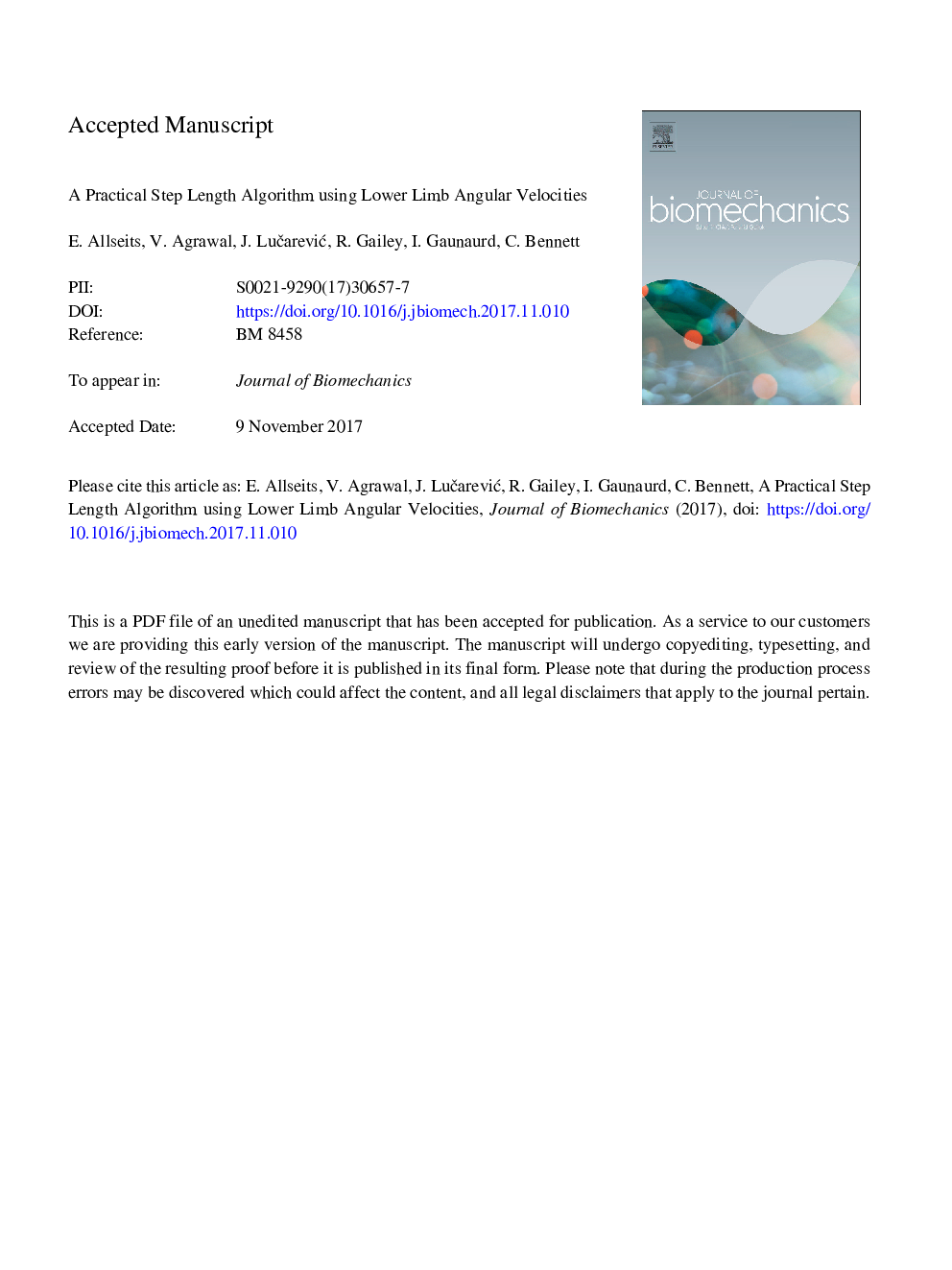| Article ID | Journal | Published Year | Pages | File Type |
|---|---|---|---|---|
| 7236915 | Journal of Biomechanics | 2018 | 26 Pages |
Abstract
The use of Inertial Measurement Units (IMUs) for spatial gait analysis has opened the door to unconstrained measurements within the home and community. Bandwidth, cost limitations, and ease of use has historically restricted the number and location of sensors worn on the body. In this paper, we describe a four-sensor configuration of IMUs placed on the shanks and thighs that is sufficient to provide an accurate measure of temporal gait parameters, spatial gait parameters, and joint angle dynamics during ambulation. Estimating spatial gait parameters solely from gyroscope data is preferred because gyroscopes are less susceptible to sensor noise and a system comprised of only gyroscopes uses decreased bandwidth compared to a typical 9 degree-of-freedom IMU. The purpose of this study was to determine the validity of a novel method of step length estimation using gyroscopes attached to the shanks and thighs. An Inverted Pendulum Model algorithm (IPM) was proposed to calculate step length, stride length, and gait speed. The algorithm incorporates heel-strike events and average forward velocity per step to make these assessments. IMU algorithm accuracy was determined via concurrent validity with an instrumented walkway and results explained via the collision model of gait. The IPM produced accurate estimates of step length, stride length, and gait speed with a mean difference of 3â¯cm and an RMSE of 6.6â¯cm for step length, thus establishing a new approach for spatial gait parameter calculation. The lack of numerical integration in IPM makes it well suited for use in continuous monitoring applications where sensor sampling rates are restricted.
Related Topics
Physical Sciences and Engineering
Engineering
Biomedical Engineering
Authors
E. Allseits, V. Agrawal, J. LuÄareviÄ, R. Gailey, I. Gaunaurd, C. Bennett,
